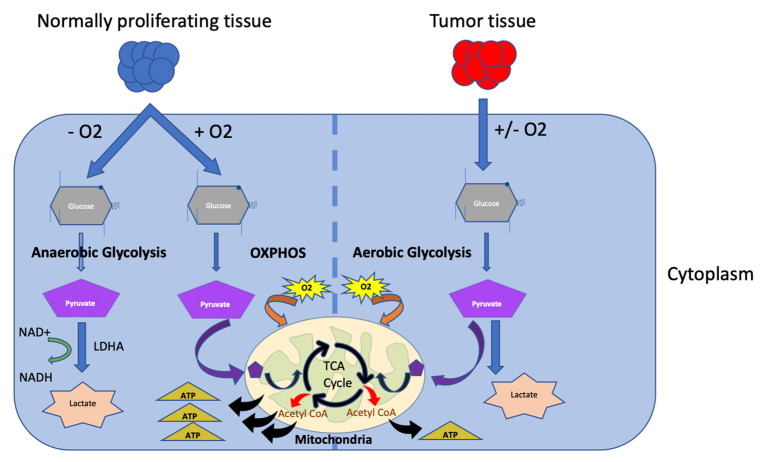Figure 3.
Warburg Effect. Normally, anaerobic glycolysis takes place in the cytoplasm, where glucose is converted to pyruvate, then consequently to lactate via the lactate dehydrogenase (LDHA), concomitantly producing nicotinamide adenine dinucleotide hydrogen (NADH). Within mitochondria, in presence of oxygen, pyruvate is converted to acetyl-CoA through Kreb’s cycle or TCA cycle. This process takes place in a series of reactions within an electron transport chain (ETC), producing adenosine triphosphate (ATP). It is known as oxidative phosphorylation or OXPHOS, and in presence of excess oxygen, it is called aerobic glycolysis or the “Warburg effect”.

